В пучине бренного мира. Японское искусство и его коллекционер Сергей Китаев - [68]
In the books on Jap[anese] painting I did not find advice on their characteristic habit which is not to turn (as we do) numerous paintings into elements of interior decoration (which become much too familiar and no longer attract attention) by hanging them permanently on the walls. They change their paintings every day and savor the freshness of perception! Isn’t it the case with literature, when it remains more fresh from the distance of time, you always discover in a talented piece new charms that escaped your attention in previous readings. So they applied this method of rereading pictures again and again. You should also add to this the calligraphic nature of their painting, and the aesthetic, visual rereading will appear in all its entirety and total freshness[219].
Kitaev is talking not only about psychological aspects of visual perception but is also drawing together the Japanese way of conceiving imagery through a combination of the visual and verbal. In this subtle perception possibly lies one of the predilections of Kitaev as collector: surimono, with their symbiosis of word and picture.
It is important to stress here that, despite all the love that Kitaev felt toward ukiyo-e prints (these confessions are lavishly scattered throughout his letters), his most serious interest was painting. In a very engaging way he describes scrolls and screens that he bought or could not buy because of price or availability. Kitaev wrote that painting represents Japanese art best of all and called exhibitions of his collection “exhibitions of painting.” In this respect, he resembles the first American nineteenth-century connoisseurs of Japanese art, Henry Bowie (1848–1921) and Ernest Fenollosa (1853–1908), who, while admiring Japanese classical art, were rather lukewarm about prints. (Fenollosa later changed his mind, possibly because of the art market and job opportunities.) Kitaev mentioned Fenollosa and his collection in two letters.
Sergei Kitaev’s dream “Encyclopedia” never became the scholarly catalogue nor his collection the touchstone for future connoisseurs that he envisioned.
Exhibitions
In a letter written in December 1916 to Vasily V. Gorshanov, a member of the Society of Friends of the Rumyantsev Museum, Kitaev gives a short appraisal of his collection:
Since the time [I formed my collection], a whole series of books on Japanese art has been published. I have them now, and thus I can more clearly understand the colossal material I collected. Besides that, I canvassed all Europe, excluding only Spain, Portugal and the Balkan Peninsula, studying museum and private collections. In 1910, in London, I saw the exhibition “The Treasures of Old Art of Japan” (I have its illustrated catalogue), which was temporarily brought from Japan by the special order of the Mikado on the occasion of the Japan-British Exhibition[220]. It occurred only once in the whole of Japanese history, and the reason was to show it to the British king, the nobility, the members of the British-Japanese Society, and also Franco-Japanese Society, specially invited from Paris. It was not shown to the general public. I saw it as a member of the Franco-Japanese Society, in the club’s building, methodically, part by part, during three days, and this was a lucky opportunity to compare my kakemono [hanging scrolls] with those exhibited there. Based on the aforementioned, I was convinced that my collection occupies the second place in Europe, both in quality and quantity. The first would remain forever the collection of the engraver Chiossone, who bequeathed it to the Academy of Arts in Genoa[221].
Kitaev visited the largest museums in Berlin, Hamburg, Paris, London and elsewhere, meeting with their curators. “Hokusai,” Kitaev observes in a letter to Pavlinov, “is represented more fully [in my collection] than even in Chiossone’s. He reiterates this claim in several other places in the letter: “Hokusai is just an amazing spontaneous force. You will see this when you look on those thousands that I have… This edition [of Manga] is in fifteen books; I have it in the most rare excellent first printing. Likewise, I have the famous One Hundred Views of Mount Fuji in three volumes in the first edition[222].” In the Brief List, he gives the following numbers: Hokusai color prints – 3 large and 337 medium size; black-and-white – 1666 large and 394 medium. Besides those he adds 80 large and exactly 1000 medium-sized color prints in late editions.
In October 1896, Kitaev proposed an exhibition of his collection to the vice-president of the Imperial Academy of Arts:
Your Excellency,
Having spent almost three and a half years in Japan, I collected about two hundred fifty Japanese paintings, several hundred sketches and drawings and several thousand color prints. Among artists, there are representatives of all schools of Japanese painting; thus, the exhibition of their works can give an idea of Japanese art[223].
Striving to enlighten the public, Kitaev organized three exhibitions of his collection: December 1 – 25 (December 13 – January 6), 1896, in the Imperial Academy of Arts (Saint Petersburg); February 1 – 23 (February 13 – March 7), 1897, in the Historical Museum (Moscow); and in late September – October 1905, in the Society for the Promotion of the Arts (Saint Petersburg). Kitaev compiled booklets, or guides, to accompany the exhibitions in 1896 and 1905
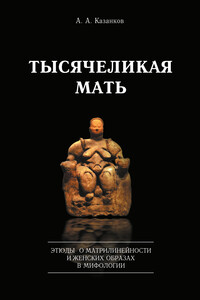
В настоящей монографии представлен ряд очерков, связанных общей идеей культурной диффузии ранних форм земледелия и животноводства, социальной организации и идеологии. Книга основана на обширных этнографических, археологических, фольклорных и лингвистических материалах. Используются также данные молекулярной генетики и палеоантропологии. Теоретическая позиция автора и способы его рассуждений весьма оригинальны, а изложение отличается живостью, прямотой и доходчивостью. Книга будет интересна как специалистам – антропологам, этнологам, историкам, фольклористам и лингвистам, так и широкому кругу читателей, интересующихся древнейшим прошлым человечества и культурой бесписьменных, безгосударственных обществ.
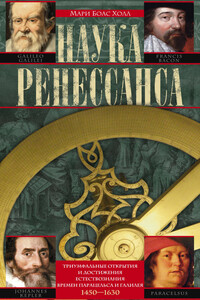
Известный историк науки из университета Индианы Мари Боас Холл в своем исследовании дает общий обзор научной мысли с середины XV до середины XVII века. Этот период – особенная стадия в истории науки, время кардинальных и удивительно последовательных перемен. Речь в книге пойдет об астрономической революции Коперника, анатомических работах Везалия и его современников, о развитии химической медицины и деятельности врача и алхимика Парацельса. Стремление понять происходящее в природе в дальнейшем вылилось в изучение Гарвеем кровеносной системы человека, в разнообразные исследования Кеплера, блестящие открытия Галилея и многие другие идеи эпохи Ренессанса, ставшие величайшими научно-техническими и интеллектуальными достижениями и отметившими начало новой эры научной мысли, что отражено и в академическом справочном аппарате издания.
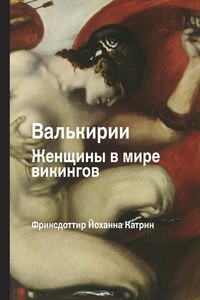
Валькирии… Загадочные существа скандинавской культуры. Мифы викингов о них пытаются возвысить трагедию войны – сделать боль и страдание героическими подвигами. Переплетение реалий земного и загробного мира, древние легенды, сила духа прекрасных воительниц и их личные истории не одно столетие заставляют ученых задуматься о том, кто же такие валькирии и существовали они на самом деле? Опираясь на новейшие исторические, археологические свидетельства и древние захватывающие тексты, автор пытается примирить легенды о чудовищных матерях и ужасающих девах-воительницах с повседневной жизнью этих женщин, показывая их в детские, юные, зрелые годы и на пороге смерти. Джоанна Катрин Фридриксдоттир училась в университетах Рейкьявика и Брайтона, прежде чем получить докторскую степень по средневековой литературе в Оксфордском университете в 2010 году.
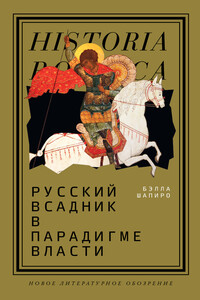
«Медный всадник», «Витязь на распутье», «Птица-тройка» — эти образы занимают центральное место в русской национальной мифологии. Монография Бэллы Шапиро показывает, как в отечественной культуре формировался и функционировал образ всадника. Первоначально святые защитники отечества изображались пешими; переход к конным изображениям хронологически совпадает со временем, когда на Руси складывается всадническая культура. Она породила обширную иконографию: святые воины-покровители сменили одеяния и крест мучеников на доспехи, оружие и коня.
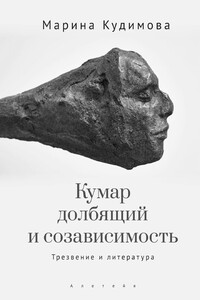
Литературу делят на хорошую и плохую, злободневную и нежизнеспособную. Марина Кудимова зашла с неожиданной, кому-то знакомой лишь по святоотеческим творениям стороны — опьянения и трезвения. Речь, разумеется, идет не об употреблении алкоголя, хотя и об этом тоже. Дионисийское начало как основу творчества с античных времен исследовали философы: Ф. Ницше, Вяч, Иванов, Н. Бердяев, Е. Трубецкой и др. О духовной трезвости написано гораздо меньше. Но, по слову преподобного Исихия Иерусалимского: «Трезвение есть твердое водружение помысла ума и стояние его у двери сердца».
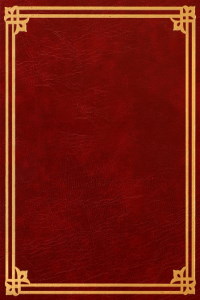
Эти заметки родились из размышлений над романом Леонида Леонова «Дорога на океан». Цель всего этого беглого обзора — продемонстрировать, что роман тридцатых годов приобретает глубину и становится интересным событием мысли, если рассматривать его в верной генеалогической перспективе. Роман Леонова «Дорога на Океан» в свете предпринятого исторического экскурса становится крайне интересной и оригинальной вехой в спорах о путях таксономизации человеческого присутствия средствами русского семиозиса. .